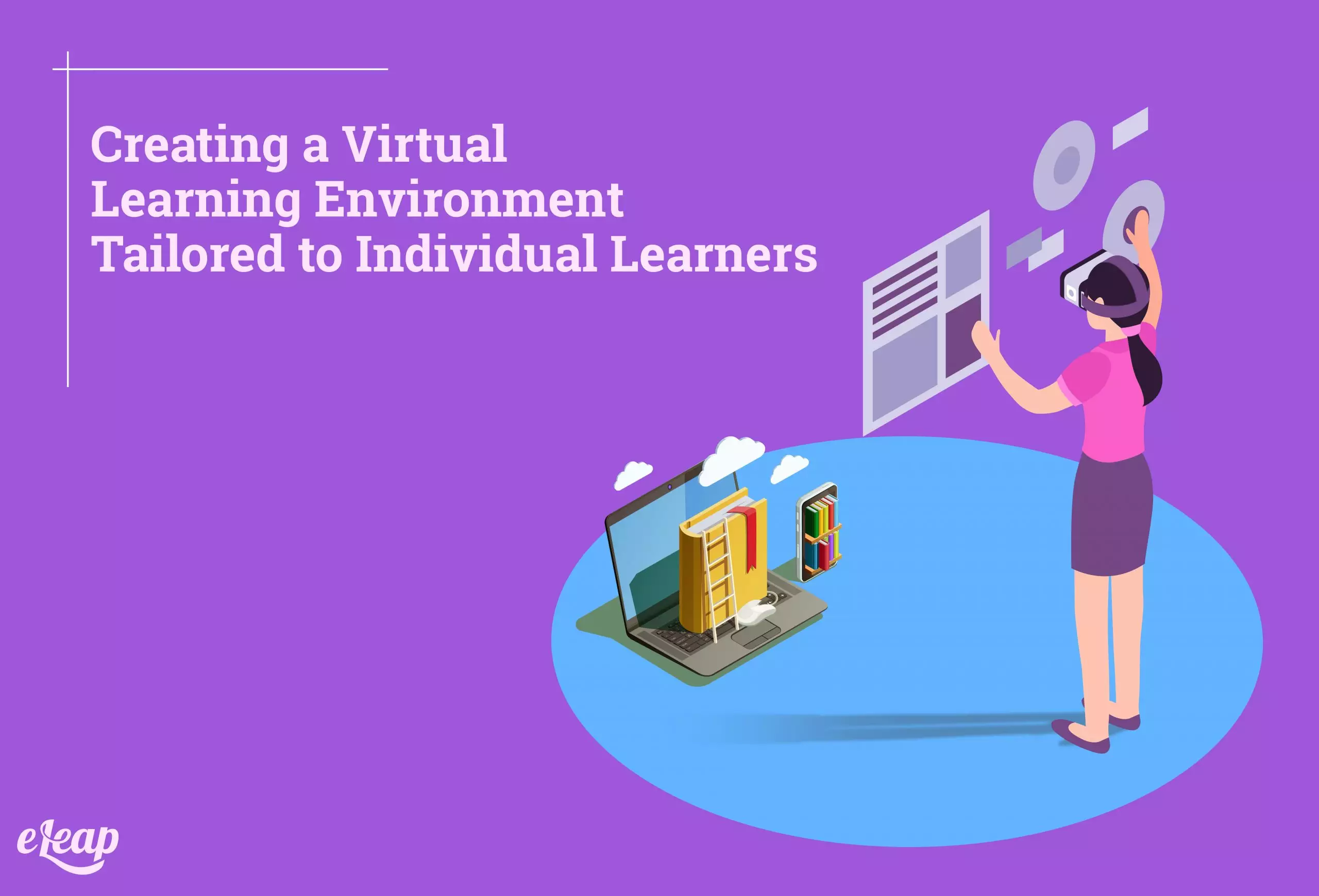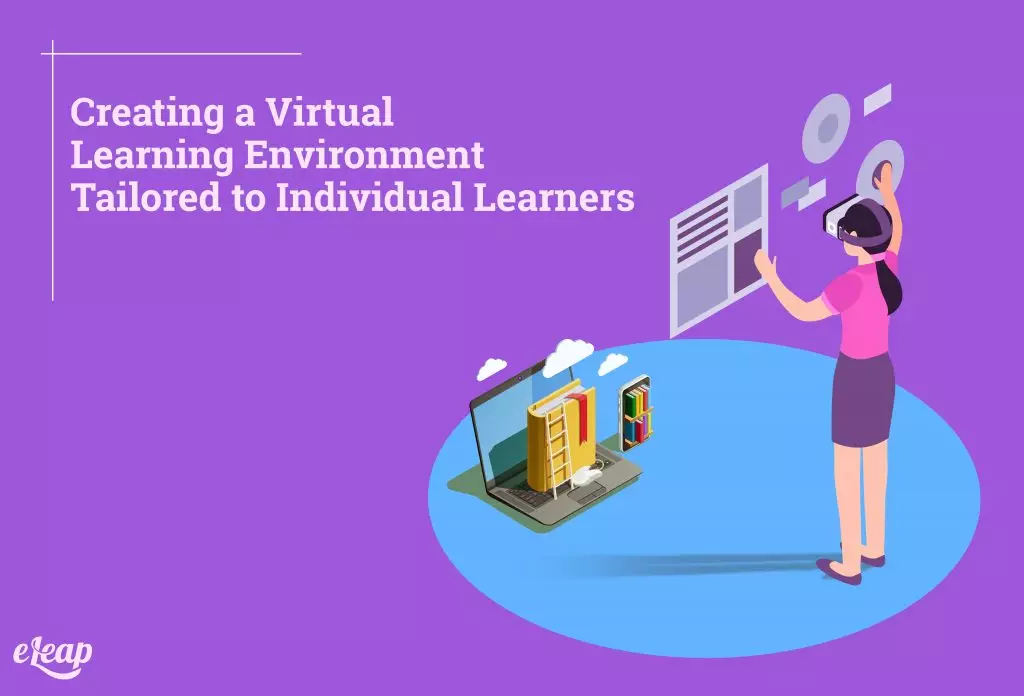Creating a Virtual Learning Environment Tailored to Individual Learners

Ongoing training is a reality for just about every business or organization today. Whether we’re talking about CE for compliance, upskilling, or employee development, it is your responsibility to facilitate learning. However, it’s important that you move away from the one-size-fits-all approach that dominated learning and development in years past. Today, the focus is on creating virtual learning environments tailored to individual learners.

Why Focus on Individuals?
It’s easy enough to wonder why individualization is needed when it comes to L&D. If a training applies to a specific role within your organization, then shouldn’t the training be applicable for anyone who holds that role? Similarly, when it comes to CE for compliance, shouldn’t the training apply to everyone in the same or a similar position within your organization? In short, why doesn’t the one-size-fits-all approach work when it seems like it should?
Simply put, it fails because no two people are the same. Sure, they might have the same role in the organization, but that’s a superficial designation. Let’s say you have two people. Both of them are accounting professionals and require CE every few years. However, when you delve beneath those professional credentials, you find two very different people.
Person A is an introvert. They spend their free time reading books, playing video games, or hiking by themselves. Person B loves to go out with friends. They don’t read much, but they love a good multiplayer video game. They skip the solo-hikes in favor of social situations where they can spend time with multiple friends.
Each of these individuals plays a similar role within your organization, but because of their personal differences, they learn in different ways. Your training courses need to provide the same material, but in a way that’s tailored to the individual and how they learn best. Person A in our example might learn just fine by reading or passively watching a video. However, Person B probably needs more engagement, even a hands-on element, to inculcate what’s being taught.
Key Components in Creating Individualized Experiences
To ensure that every learner in your organization can progress at their own pace and truly understand and take in the information you’re presenting, you need to create a virtual learning environment tailored to them. That will require understanding three key components:
- Personalization – First, we need to consider personalization. This is nothing more than pacing the instruction at the individual’s preference and tailoring content delivery to their preferences. For instance, one person might learn better through a gamified lesson, while another would do better with an interactive video.
- Individualization – Individualization is part of personalization and refers primarily to pacing the content to the needs of different individuals. For example, one student might breeze through module after module, while another will require more time to complete their lessons.
- Differentiation – Again, this is a component of personalization. It refers to instruction that is tailored to the learning preferences of a particular learner. For instance, Joanne might enjoy the competitiveness of game-based learning with a leaderboard, while Bob might prefer more traditional reading-based lessons followed by quizzes.
Important Capabilities of Your LMS
Your learning management system (LMS) is the key to creating personalized virtual environments for each learner. However, not all systems are the same. Make sure that yours is up to par and has the following capabilities:
- Gamification – Make sure that your LMS allows you to turn modules and individual lessons into games.
- Know Your Employees – You need to ensure that you can get to know the preferences of your employees when it comes to learning delivery. Entry quizzes, surveys, and the like can all help you tailor a learning environment to each person.
- Changes on the Fly – Ensure that your LMS allows you to change module formats to suit individual preferences. Monitor employee performance and/or preferences so that you can change these elements to suit them.
- Competition – While games can be a lot of fun, some learners thrive in a more competitive environment. Award badges, buttons, and other rewards for completion and high scores.
- Socialization – Social learning is a powerful tool that allows your team members to build one another up.
- Video Capabilities – Your LMS should support video conferencing so that learners can communicate with one another, to support mentorship programs, and so that teachers and supervisors can communicate with one another and with students.
- Tracking – Make sure that your LMS delivers the ability to track CE for compliance, as well as other learning and development aspects. Without the ability to know where employees stand in their training at a glance, you’ll waste a great deal of time and effort.
Get your free eLeaP sandbox account and begin creating your virtual learning environment.
Maintaining Standards
Despite the need for differentiation, individualization, and personalization, all virtual environments need to communicate the same material for each role or topic. For instance, to use the two people from our previous example once more, while you might deliver it in game format for one learner and an interactive animated video for another, both lessons would cover the same fundamentals that apply to the role of those individuals within the accounting department.
You must ensure that all experiences are built around specific standards. Ask yourself:
- Does the lesson cover the required material?
- Does it do so in a way that addresses the intent of the material?
- Does it do so in a way that ensures this learner takes away the same meaning as other learners in different virtual environments?
In Conclusion
The reason one-size-fits-all training solutions fail is that everyone is different. Each one of us is an individual with unique needs, preferences, and capabilities. What works for one person may not work for another. It is your job to ensure that each employee is provided with a learning environment in which they can flourish and in which they will do best. Using an advanced LMS is one of the only ways to create that type of environment.